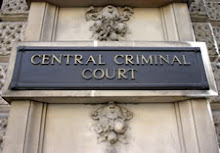Round up your family black sheep at the Old Bailey
From The Times
January 7, 2008
By Natalie Bennett
Reflecting the reality of most of the Old Bailey’s work, then as now, the criminal Bennetts were a rather pathetic lot: maids stealing silver spoons or aprons; apprentices caught with their masters’ goods, a bag of tea or a strand of ribbon.
Ann, a maidservant, was sentenced to a public whipping in 1774 for taking a silver thimble and a string of beads from the Southampton Row master she had just left. Her simple defence: “I did not take them”, has the tone of resigned insolence: the items were found in her luggage. She was, however, unlucky in her punishment, since use of the penalty for women was then already in decline.
There were, however, real black sheep in the family. Thomas, transported in 1730 for his part in stealing 56lb of sugar, was, the Proceedings say, one of those “they call Feezers, that lurk about the Keys”. That his gang had only their aprons to carry away their loot in gives lie, however, to the prosecution claim of organised crime.
Some, perhaps, were just too fly to be punished: John was indicted for pickpocketing “a silver watch, two gold lockets, and a diamond ring” in 1780. The victim was one Charles Bremham, fresh up from the country. He told the Old Bailey that at 11pm, on leaving a tavern: “I felt someone pressing violently on the small of my back, and he cried get on, get on, as if an ox or a carriage was coming . . . I felt a hand at the flap of my waistcoat, taking my watch. . . . I catched the man.”
A search of John’s person, however, found nothing; and in the courtroom the befuddled victim was none too sure this was the offender anyway.
Once, collecting such data about the antics of my putative ancestors would have taken days, if not weeks, of work in the archives. Now all it requires is a simple name search at www.oldbaileyonline.org.
The site reprints the Proceedings, the long-running bible of the true-crime genre. Produced soon after the conclusion of each court session, eight times a year for 160 years, the volumes were aimed at a popular audience. A late-17th-century French visitor, Louis de Muralt, reported they were “one of the most diverting things a man can read in London”.
The internet edition was inspired by Bob Shoemaker, of the University of Sheffield, and Professor Tim Hitchcock, of the University of Hertfordshire. They had studied the Proceedings, then accessible only through 38 reels of microfilm. “We were really impressed by the richness and detail of the accounts, and wanted to see them more widely used,” Dr Shoemaker said.
Faded, damaged pages of 18th-century font do not make for easy reading, as the digital image of each page, available beside the modern text, shows. For accuracy the transcribing into easy-reading modern text was done twice, independently, and the results compared, producing, Dr Shoemaker said, an accuracy of 99.8 per cent.
A total of 45,000 trials are posted already; by next summer the figure will be 100,000, covering 1674 to 1834. Since the project went on line in March there has been strong interest: the number of visitors is now nearly 1,000 a day, Dr Shoemaker said, and in all more than 200,000 people from all around the world have seen the site.
The project has also inspired a conference, to be held in July at the University of Hertfordshire, which will explore the insights from the latest work on the Proceedings, and similar texts. Dr Shoemaker said: “Even today, history is often written from the top down: we want to encourage research about the role of ordinary people.” Would-be researchers can take note: for the rest of us, uncovering the misdeeds of our ancestors is satisfying enough.

No comments:
Post a Comment